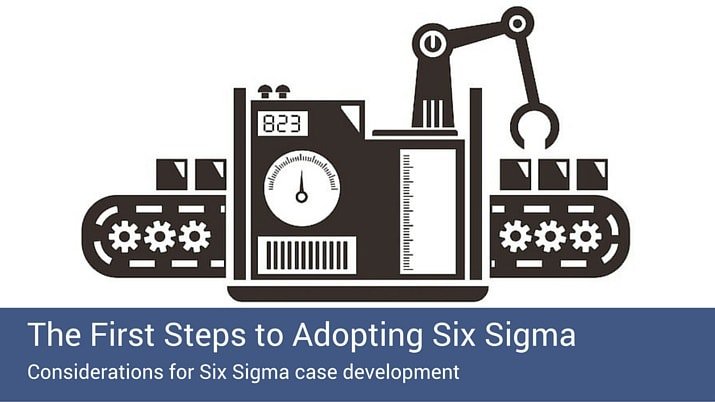The First Steps to Adopting Six Sigma

Last Updated October 19, 2023
These days, the benefits of Six Sigma are well-tried and well-known, but there are still many industries that haven’t adopted the methodology. In some cases, companies might already be using a similar methodology. In other cases, the business’s processes might not be right for Six Sigma.
In a lot of instances, however, it’s not about either of those things. It’s about leadership who doesn’t understand the benefits of Six Sigma, and the managers who aren’t quite sure how to broach the topic with those in senior positions. These are the organizations who are missing out on significant process improvement.
Creating a Case for Six Sigma
Many times, leadership may not buy into Six Sigma because the return on investment isn’t readily apparent. They don’t believe the methodology gives them any significant advantage in the marketplace, or it doesn’t minimize risk adequately enough. If they are ever going to adopt the methodology, then these are the topics of which they require convincing.
If these traits describe your leadership, there are several steps you can take to create a case for Six Sigma:
- Gather hard data about other organizations who experienced significant returns on investment through Six Sigma
- Record any required success factors for Six Sigma
- Understand all deployment requirements
- Designate a project that’s best suited to pilot Six Sigma
- Based on that project, figure out an approximate return on investment
Complete those five steps before you speak with a senior manager or executive. Hard numbers and thorough research can help significantly strengthen the case for Six Sigma.
Those aren’t the only considerations you should make, however.
Consider Your Audience
Think about the leadership in your organization. Some managers and executives may appreciate new initiatives. Others may be more reluctant to change an already-successful formula. In order to find out what type of audience you’re pitching to, review things like mission statements, goals and past presentations that may have been given to the company.
If at all possible, a face-to-face interview with important stakeholders can also help you understand their perspective as well as identify any specific challenges or concerns they may have. Use the information you find to tailor your case for Six Sigma to their needs and expectations.
Demonstrating Six Sigma
Typically, organizational leaders respond well to actual demonstrations. Prior to your pitch, prepare examples of other organizations who have successfully deployed Six Sigma. The Internet can yield a plethora of relevant information for you to cite. Just make sure the organizations you research are similar in size and ambition to your company.
In most cases, what you’ll find is that most organizations who have successfully deployed Six Sigma have done so via data-driven approaches, the use of pilot projects to test theories and methodologies, leadership support and several other factors.
Deploying Six Sigma
Generally, leadership is likely interested in the scale, timing and total cost of Six Sigma deployment. These concerns can be assuaged by deploying in a stair-step approach, in which a small Six Sigma deployment requires approval-based milestones and executive signoff before it’s ever introduced to the whole organization.
Pilot projects are oftentimes the most efficient way to implement a stair-step deployment. It is one project designed to test the Six Sigma methodology; if things go well, the methodology can gain signoff and move to other parts of the organization. If it does poorly, there’s a very small loss to time and resources.
The Benefits of Six Sigma
In order to drive home your presentation, conclude with return on investment. Have a five-year cost/benefit analysis sketched out, which discusses the potential costs and savings of Six Sigma implementation. Costs can include things like training, software, hardware and consulting, but those costs will generally be offset by savings as the organization becomes more comfortable with Six Sigma.
Six Sigma can align with your company’s goals and ambitions. It’s a proven approach, used by companies worldwide to gain efficiency and competitive advantage. It has the potential to be of great benefit to your company, and all it takes is a leap of faith and a pilot project.





